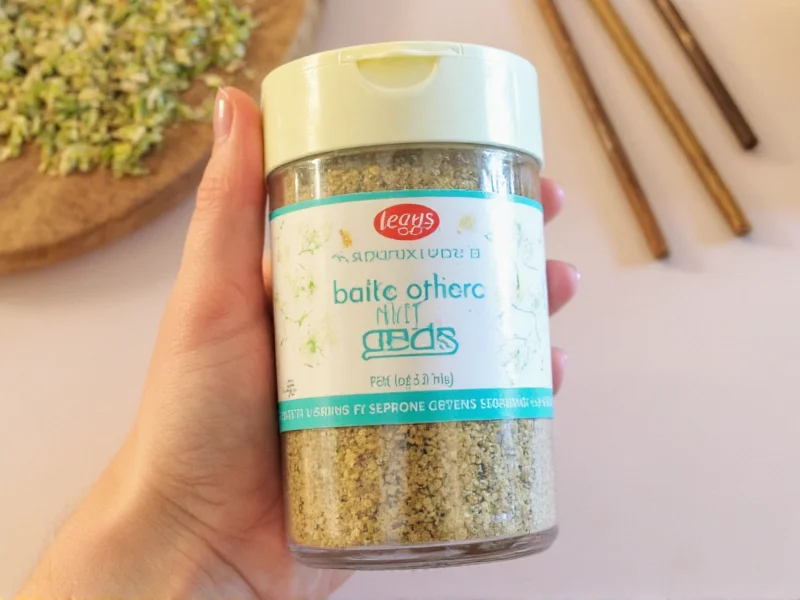For home cooks exploring Caribbean flavors, understanding Leggs Seasoning's composition and applications opens doors to authentic Jamaican cooking. This comprehensive guide examines the seasoning's background, ingredient breakdown, and practical culinary applications based on traditional preparation methods.
History and Cultural Significance
Developed in Jamaica during the mid-20th century, Leggs Seasoning became a staple in Caribbean households through its distinctive flavor profile that complements traditional dishes. Unlike many commercial seasonings, Leggs maintains its position through consistent quality rather than aggressive marketing. The seasoning's popularity spread internationally through Caribbean diaspora communities, becoming essential for authentic jerk preparations and everyday cooking.
Ingredient Analysis and Flavor Profile
Leggs Seasoning's strength lies in its balanced blend of savory and aromatic components. The primary ingredients work synergistically to create complex flavor layers without overpowering dishes. Understanding these components helps home cooks use the seasoning effectively:
| Primary Ingredient | Flavor Contribution | Traditional Culinary Role |
|---|---|---|
| Salt | Base flavor enhancer | Draws out natural juices in meats |
| Garlic Powder | Pungent, savory depth | Foundation for meat rubs and stews |
| Onion Powder | Sweet, aromatic base | Builds flavor foundation in rice dishes |
| Thyme | Earthy, herbal notes | Essential for jerk seasoning blends |
| Black Pepper | Subtle heat and complexity | Complements grilled and roasted foods |
Practical Applications in Caribbean Cooking
Knowing what Leggs seasoning is used for transforms ordinary meals into authentic Caribbean experiences. Professional chefs recommend these applications for best results when working with this versatile blend:
Meat Preparation Techniques
For chicken, pork, or fish, create a dry rub using 1-2 tablespoons of Leggs Seasoning per pound of meat. Allow proteins to marinate for at least two hours, preferably overnight, for maximum flavor penetration. When preparing jerk chicken, Leggs serves as the foundational seasoning before adding scotch bonnet peppers and allspice.
Rice and Legume Dishes
Add 1 teaspoon of Leggs Seasoning to rice water before cooking for flavorful side dishes. When preparing gungo peas (pigeon peas) or kidney beans, incorporate the seasoning during the boiling process to infuse the entire dish with Caribbean flavor. This technique works particularly well for traditional Jamaican rice and peas.
Versatile Vegetable Enhancement
Toss roasted vegetables with olive oil and Leggs Seasoning before cooking for enhanced flavor. This method works exceptionally well with root vegetables like yams, sweet potatoes, and cassava. For steamed vegetables, sprinkle the seasoning lightly after cooking to preserve its aromatic qualities.
Storage and Shelf Life Considerations
To maintain optimal flavor, store Leggs Seasoning in an airtight container away from direct sunlight and moisture. Properly stored, the seasoning retains peak flavor for 12-18 months. Avoid storing near heat sources like stovetops, as temperature fluctuations degrade the volatile compounds responsible for its distinctive aroma. Check for freshness by smelling the container—diminished aroma indicates reduced potency.
Substitution Guidance When Leggs Seasoning Is Unavailable
When seeking a Leggs seasoning substitute, combine equal parts garlic powder, onion powder, dried thyme, and black pepper with salt to taste. For closer approximation, add small amounts of dried pimento (allspice) and a pinch of cayenne. Remember that commercial substitutes often contain additional ingredients like MSG or anti-caking agents not present in authentic Leggs Seasoning.
Common Questions About Leggs Seasoning
Many home cooks wonder about proper usage techniques and applications for this Caribbean staple. The following frequently asked questions address common concerns when incorporating Leggs Seasoning into regular cooking routines.
What dishes is Leggs Seasoning traditionally used for in Jamaican cooking?
Leggs Seasoning serves as the foundation for jerk preparations, rice and peas, curried goat, and fried fish. It's commonly used in meat rubs, vegetable seasoning, and as a base flavor for soups and stews throughout Jamaican cuisine.
How much Leggs Seasoning should I use per pound of meat?
For optimal flavor without overpowering, use 1-2 tablespoons of Leggs Seasoning per pound of meat. When creating marinades, combine with oil, citrus juice, and additional spices for best results. Always allow at least two hours for flavors to penetrate the meat.
Is Leggs Seasoning gluten-free and suitable for special diets?
Authentic Leggs Seasoning contains no gluten-containing ingredients and is naturally gluten-free. However, always check the specific product label as formulations may vary by region. The seasoning contains salt as a primary ingredient, so those on sodium-restricted diets should use it sparingly.
Can I use Leggs Seasoning in non-Caribbean dishes?
Yes, Leggs Seasoning enhances many international dishes. Try it in meatloaf, roasted vegetables, or as a base for salad dressings. Its balanced garlic-onion-spice profile complements Mediterranean, American, and Asian cuisines when used moderately to avoid flavor conflicts.
How does Leggs Seasoning differ from other all-purpose seasonings?
Leggs Seasoning features a distinctive Caribbean flavor profile with prominent garlic, onion, and thyme notes without MSG. Unlike many commercial blends, it maintains a balanced salt-to-spice ratio specifically designed for traditional Jamaican cooking techniques and flavor expectations.











 浙公网安备
33010002000092号
浙公网安备
33010002000092号 浙B2-20120091-4
浙B2-20120091-4